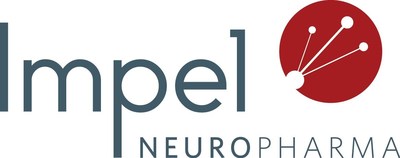Exploratory Efficacy Data Reveal INP104 Resulted in Pain Relief in 66.3% of Patients and Pain Freedom in 38% of Patients at Two Hours After First Dose; Additionally, 16.3% of Patients Reported They Gained Initial Relief as Early as 15 Minutes At Weeks 21-24, Over 98% and 95% of Patients Who Experienced Pain Freedom at Two Hours Self-Reported No Recurrence of Migraine Symptoms or Use of Rescue Medications During the 24 and 48-Hour Periods, Respectively, After Using INP104 74%
| SEATTLE, June 10, 2020 /PRNewswire/ -- Impel NeuroPharma, a late-stage biopharmaceutical company focused on the development and commercialization of transformative therapies for patients living with central nervous system (CNS) disorders with high unmet medical needs, today announced positive results from “STOP 301" (Safety and Tolerability of POD-DHE), the Company’s pivotal Phase 3, open-label study of the safety and tolerability of INP104 (dihydroergotamine mesylate) or DHE, administered to the vascular rich upper nasal space via Impel’s proprietary POD® technology, for the treatment of acute migraine. The study, which treated over 5,650 migraine attacks, evaluated self-administered, intermittent use of INP104 for up to 52-weeks, and also collected in a diary exploratory efficacy data of INP104 as assessed by patient reported change from baseline in migraine measures during the course of the study. Results showed the STOP-301 study met its primary objectives, with no new safety signals or concerning trends in nasal safety findings observed for INP104 following delivery of DHE to the upper nasal space. DHE is a molecule long relied upon for its high response rate and sustained efficacy. Its use has been limited in part by its availability only as an invasive injectable or in other delivery forms with high dosing variability. In the study, the majority of treatment-related adverse events for the 24-week Full Safety Set (FSS) (n=354) were mild and transient in nature. The most frequently reported adverse events (≥5%) during the entire 24-week period were nasal congestion (15.0%), nausea (6.8%), nasal discomfort (5.1%) and unpleasant taste (5.1%). The majority of patients (74% and 90%) completed the 24- and 52-week phases of the study, respectively. No drug-related serious adverse events (SAEs) were observed over the entire 52-week study. “Despite historically being known as a highly effective treatment, use of DHE in the treatment of acute migraine has been limited due to dose-related side effects, inadequate or inconvenient routes of administration and high variability in dose delivered, making these data highly encouraging for clinicians who need an at-home option that also has the benefit of broad neurogenic activity,” said Stewart J. Tepper, M.D., Professor of Neurology at the Geisel School of Medicine at Dartmouth and Director of the Dartmouth Headache Center in the Department of Neurology of Dartmouth-Hitchcock Medical Center. “Interestingly, an increased recognition of the link between migraine and gastrointestinal issues may be why nearly 60 and 90 percent of patients with migraine experience vomiting and nausea, respectively, during an attack which presents limitations for the use of oral therapies. If approved, INP104 has the potential to offer patients a non-oral alternative with an all-in-one approach to treating the whole migraine due to DHE’s broad receptor binding profile.i” In the study, INP104 delivered 1.45 mg of DHE, less than 72.5% of the currently approved dose (2.0 mg). Optimal dosing is critical so that patients may stand to benefit from the established efficacy profile of DHE, without the potentially triggering undesired side effects that can be experienced with delivering higher doses of drug to the lower nasal space. Per the approved product label for Migranal®, the U.S. Food & Drug Administration (FDA) currently limits the maximum dose of DHE to 6.0 mg a week. Exploratory efficacy data in the FSS (n=354) observed that 66.3% of patients achieved pain relief and 38% of patients achieved pain freedom at two hours following their first dose of INP104. In the Primary Safety Set (PSS) (n=185), 33.1% of patients who took an average of two or more treatments with INP104 per the 28-day period during the 24-week treatment phase, achieved pain freedom at two hours. Initial onset of pain relief began as early as 15 minutes for 16.3% of patients, which continued to improve over time. Additionally, sustained pain freedom was observed in the majority of patients, with 98.4% and 95% of patients reporting no recurrence of their migraine or use of rescue medications during the 24- and 48-hour periods after using INP104 during weeks 21-24. Together, these results suggest that upper nasal delivery may provide an effective, consistent, and well-tolerated alternative to acute oral and injectable treatments for migraine, while potentially providing the reliable efficacy, speed, and potency of the long-established DHE molecule without the need for an injection. “We believe that these data add to the growing body of clinical evidence supporting the potential of INP104 to be a transformative new therapy for acute migraine. In addition to the STOP 301 study demonstrating INP104’s potential to be both safe and well-tolerated when delivered to the upper nasal space, the data showed unsurpassed and sustained patient-reported pain freedom and pain relief rates compared to the best usual care in our exploratory efficacy analyses,” said Stephen B. Shrewsbury, M.D., Chief Medical Officer of Impel NeuroPharma. “We believe the low incidence and mild nature of treatment-related adverse events are attributable to INP104’s ability to reliably and consistently deliver an optimal low dose of DHE, which may enable patients to benefit from the established efficacy of this trusted molecule, without undesired side effects that may be experienced with higher doses of drug.” Further analysis of STOP 301 data is ongoing and will be submitted for future publication or presentation. Impel NeuroPharma plans to submit a New Drug Application to the FDA in the second half of 2020. About STOP 301: About INP104: INP104 utilizes Impel’s propellant-enabled POD technology to conveniently and consistently deliver optimal doses of DHE deep into the vascular rich upper nasal space, an ideal target for efficient drug administration, particularly for the majority of patients with migraine who experience nausea and/or vomiting during an attack, which presents limitations for the use of oral therapies, including triptans, CGRP inhibitors and ditans as well as other non-specific acute migraine medications. About Acute Migraine: Further, evidence suggests that gastroparesis, delayed emptying of the stomach, is a prevalent feature in migraine that may delay or reduce the absorption of oral medications, including triptans, gepants and ditans. This means that acute medications can remain in the stomach for hours, delaying symptom relief, leading to loss of confidence (about future administration) and prolonged suffering for the current migraine attack.vi About Impel NeuroPharma: IMPEL, POD and the IMPEL Logo are registered trademarks of Impel NeuroPharma, Inc. To learn more about Impel NeuroPharma, please visit our website at http://impelnp.com. About Precision Olfactory Delivery or POD® Technology While an ideal target for drug administration, to date no technology has been able to consistently deliver drugs to the upper nasal space. By utilizing this route of administration, Impel NeuroPharma has been able to demonstrate blood concentration levels for its investigational therapies that are comparable to intramuscular (IM) administration and can even reach intravenous (IV)-like systemic levels quickly, which could transform the treatment landscape for CNS disorders. Importantly, the POD technology offers propellant-enabled delivery of dry powder and liquid formulations that eliminates the need for coordination of breathing, allowing for self- or caregiver-administration in a manner that may improve patient outcome, comfort, and potentially, compliance. Migranal is a registered trademark of Bausch Health Companies Inc. or its affiliates. Contact: i Silberstein SB. Headache. 2003; 43:144-166; Buzzi MG & Moskowitz MA. Cephalalgia. 1991; 11:165-168; Silberstein SD et al. Headache. 2020; 60:40-57; Migranal® Product Information. Available at: https://www.bauschhealth.com/Portals/25/Pdf/PI/Migranal-PI.pdf. Accessed Jan 20, 2020.
SOURCE Impel NeuroPharma |





